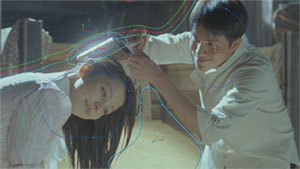

Volume 12
Published on November 2023Volume title: Proceedings of the International Conference on Global Politics and Socio-Humanities (ICGPSH 2023)
The sudden outbreak of new pneumonia has had a profound impact on the global world and all walks of life. At the same time, it also creates a torrent of public opinion under the mud of information and accelerates the fermentation and loss of control of the Internet public opinion field. Tuchman, a famous scholar, claimed in Doing the News that “news is the constructed reality”, and the mainstream media controls the trend of public opinion when disseminating news. In this paper, public opinion at each stage of the epidemic was analyzed based on the crisis phase analysis theory proposed by Steven Fink. In the face of the epidemic crisis, the mapping of the media plays an important role. Mainstream media should control the public opinion crisis through different discourse strategies and social effects caused by communication methods.

 View pdf
View pdf



Post-modernist architecture has been the subject of much debate, and a clear definition of it has not been settled. It is also difficult to converge on the views on the association of postmodernism with modernism. On account of its complex and profound theoretical connotations and as a reflection on modernity, postmodernism is concerned with the future and destiny of humanity. The future of post-modern architecture is of great significance to the continuation of human civilization. Few studies have been capable of integrating post-modern architecture with social and ecological perspectives in the prevailing academic vision. This paper will focus on the case where modern architecture and past post-modern architecture no longer meet the demands of both humanity’s social development and environmental protection, drawing on David Harvey’s spatial theory to add ecological protection elements to post-modern architectural design and from the Time-space compression theory to solve the problem of the lack of humanity in past post-modern architecture. It is concluded that improving the transportation networks between architectural spaces or with the exterior and utilizing new materials and structures can bring new dynamics to post-modern architecture.

 View pdf
View pdf


This paper examines the impact of the COVID-19 on The Walt Disney Company and the measures taken by the company, particularly the launch of the streaming service Disney Plus, to mitigate the economic crisis. The pandemic led to the closure of Disney's theme parks worldwide, resulting in significant revenue losses. The film industry also suffered as movie theaters closed and production was disrupted. As a result, Disney's stock price fell, and the company faced financial difficulties. However, the launch of Disney Plus in November 2019 provided a new source of income and profit opportunities. When people had to stay home, the demand for streaming services surged, and Disney Plus capitalized on this trend. As a result, the success of Disney Plus exceeded expectations, surpassing 60 million subscribers by August 2020. The paper analyzes the strategies employed by Disney to promote Disney Plus, including releasing blockbuster films directly on the platform and extensive advertising campaigns across various media channels. The company's public statements emphasizing its commitment to streaming media and its confidence in Disney Plus further contributed to its success. Overall, Disney Plus played a crucial role in mitigating the financial impact of the COVID-19 on The Walt Disney Company.

 View pdf
View pdf


In the influential work, Yearning: Race, Gender, and Cultural Politics, Bell Hooks scrutinizes prevailing Black feminist discourses, emphasizing the hegemony of white feminists, intersecting forms of oppression, and the consequential loss of subjectivity. Nevertheless, hooks’ innovative analysis encounters limitations when addressing the complexities within a literary context. This study conducts a comparative analysis of Black female identity construction, exploring the applicability of hooks’ theoretical framework to Sula, a novel by African American author Toni Morrison. This paper seeks to clarify alleged contradictions and evaluate hooks’ theory in three key aspects: the common predicament of Black female identity, the process of identity formation, and the relationship between identity and social class divisions. The analysis uncovers the necessity of acknowledging the shortcomings of hooks’ arguments when applied to Black feminist literature, such as its inattention to the profound inner struggle originating from cultural constraints in authentic experiences of Black females. Due to distinct writing contexts and backgrounds, Bell Hooks and Toni Morrison diverge in their perspectives on Black female identity, necessitating a closer examination to steer Black feminism towards a more radical path in the future.

 View pdf
View pdf



Film, rooted in technology, possesses unique aesthetic characteristics that are intertwined with technological advancements. Since the beginning of the new century, the integration of digital technology has facilitated a seamless transition of film art from production to distribution, ushering in a new era of digital film aesthetics. This paper focuses on investigating the relationship between digital technology and film art, clarifying the developmental origins of both, and using the degree of digital technology’s integration into film art as a starting point. By examining classic digital film texts, the paper explores the reshaping of various aspects of film production through the application of digital technology. Based on film aesthetic theories, this paper aims to deconstruct traditional film aesthetics through the lens of digital film, making meaningful attempts to establish the aesthetic framework for Chinese digital film art.

 View pdf
View pdf


The topic of public art and the role of public art in enhancing the cultural status of the Filipino community in Hong Kong is significant. This paper begins by introducing the Filipino community in Hong Kong, outlining its contributions to the city’s economic and social structure as well as the difficulties it has had assimilating into Hong Kong society and dealing with issues like discrimination, cultural identity, poverty, and living conditions. Using specific examples, this article analyzes how public art may be a tool to encourage social and cultural development as well as how it might improve the cultural standing of the Filipino population in Hong Kong. The Filipino community in Hong Kong faces challenges related to cultural identity and social standing. They have made significant contributions to the city’s development but have a tenuous social standing, often working in low-wage jobs with limited prospects for growth. And the community also faces difficult living conditions. The article as a whole emphasizes the value of public art in fostering cultural identity and fostering a more inclusive society. Additionally, it makes recommendations for how to change the current situation and the issues facing the Filipino community in Hong Kong, including defending their rights and interests and fostering their assimilation into Hong Kong’s social culture.

 View pdf
View pdf


This paper is an examination of how colonial language and its (after) effects are represented in postcolonial English literature. Two literary works are examined: the Indian diplomat and novelist Vikas Swarup’s Slumdog Millionaire and the Haitian-American writer Edwidge Danticat’s short story “Children of the Sea”. Through close reading and comparative analysis, the paper concludes that there are three main symptoms of language abuse in the colonial context, which it labels as “The Aphasia Syndrome” (TAS). Briefly, the TAS includes (1) the imitation (parrot-talk) of the colonizer’s language as a means of accessing its power and resources; (2) the silencing or suppression of all colonized speech; and (3) the colony’s “nonsensical” ravings, which include the use of indigenous words and expressions without providing translations, as well as the reorganization and reappropriation of signifiers in the privileged language to create indecipherable expressions. By diagnosing TAS and its historical affections on colonized peoples, the paper hopes to excavate the anti-colonial potential inherent in indigenous languages and speech, while advocating a more promising prospect for reconciliation, communication, and healing.

 View pdf
View pdf


As the most important vein of cultural legacy, intangible cultural heritage contributes new cultural thinking and cultural innovation to the growth of cultural creativity in today’s society. However, the current state of intangible cultural heritage sustainability is deplorable. While laws and strategic plans for conserving intangible cultural assets have been implemented in several countries and areas, the sustainability of intangible cultural heritage still requires more in-depth refining and research. Based on the Chinese intangible cultural heritage, Nuo opera, the key research issue in this study is how are the values of intangible cultural heritage being developed sustainably to investigate the sustainable conservation and development of intangible cultural heritage. The main research approach is documentary research and the means that exist today for the transmission and protection of intangible cultural assets, such as Nuo opera, to examine the profound meaning of its development and protection. The most important thing for the sustainable protection of intangible cultural heritage, according to this study, is the identity of its culture, as well as the various values brought by the sustainable development of this cultural heritage, including but not limited to economic value, social value, cultural value, and other important factors. Intangible cultural heritage development must pay more attention to its own cultural values as well as the political elements and economic development needs in the current context, not just to preserve the heritage for the sake of development, but to continuously keep up with the times and dig deeper into its spirit and spiritual core.

 View pdf
View pdf


The progress of the Internet has brought faster and wider dissemination of information, and brought a communication platform for women to show their charm. But the Internet, as a more efficient medium of communication, has also deepened the dilemma of the male gaze for women. The author used summarizing literature as a method, and summarized the current situation, problems and future development of female images on the Internet based on the survey results. The research purpose of this paper is to discover the presentation of female images on the Internet in the current Internet era, discover the existing problems and challenges faced by the current female images on the Internet, and explore the future female images that promote the development of feminism. The problem, according to the study, is that network media focuses on women’s appearance and body, imprisoning women in the male gaze, and women are objectified and lose their own value. In order to further promote the development of feminism, the author believes that women should use the Internet media to spread feminist ideas, the government should strengthen the supervision of the Internet, and culture and education should be improved.

 View pdf
View pdf


With the development of new media technology and the iteration of social media and short video platforms, women are able to grasp more voices through various ways and opportunities, and at the same time create more values with women themselves as the main body, breaking the stereotypes of women in society. This paper analyzes the transformation of the “stereotypical” female image in traditional media dramas by citing some female characters in dramas, while using social news and certain social phenomena as the starting point to discuss the impact of new media on the promotion of women’s image on screen and women’s discourse. Finally, we reflect on the dilemma faced by women in the current new media environment. The platform of new mediaplays a role in providing a more comprehensive understanding of this change for many participants in the self-media environment, and correctly views the impact of the construction of women’s image on new media platforms, and draws attention to the other dilemmas brought by new media platforms to women.

 View pdf
View pdf




